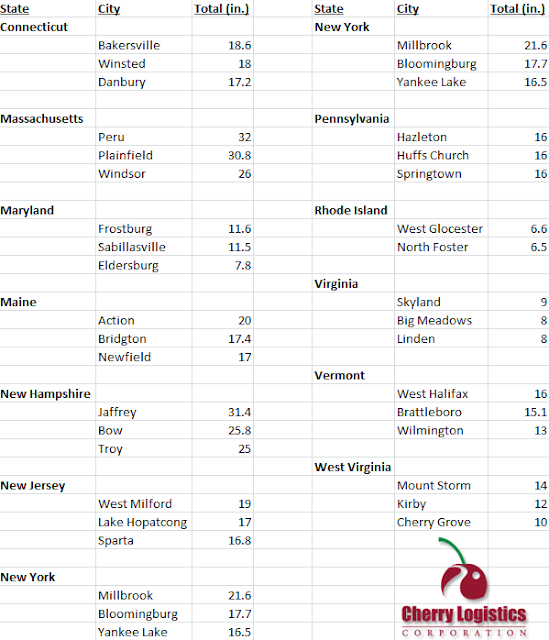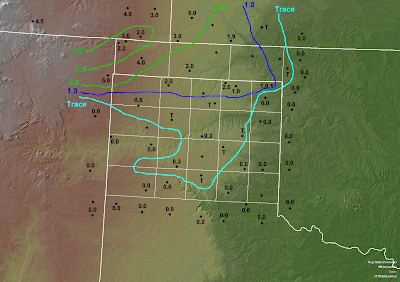Starting Friday and ending yesterday, snow fell from Virginia to Maine. In New York City's case, they had not seen a measurable October snowfall since 1925. Even in the storm of 1925, the snow that was recorded was less than an inch.
Taken From Tom Skilling
No, you are not seeing this map wrong; it does indeed say 28 inches near Northampton, Massachusetts. This is a storm total map that displays values recorded up until this morning.
Here are some other notable snow totals:
Nor'easters (the name for this type of storm) occur between October and April. Winter conditions help these storms to occur regularly but only a few produce damage such as the one that did this weekend. As of 9 AM this morning, 2.1 million power outages had been reported.
Nor'easters get their name from the strong northeasterly winds that blow in from the ocean and ahead of the storm. The severe Nor'easters tend to form off-shore and off the coast of Florida. The Gulf Stream warms and generates a low pressure center. As it makes its way up the east coast, it gathers warm and moist air from the Atlantic. The difference in temperature from the warm water to the cold air over land is what causes the Nor'easter to become intense and produce heavy precipitation. Along with heavy rain and snow, Nor'easters can bring winds greater than 60 miles per hour.
NOAA: 4/16/07
It may have been the northeast United States that received a ton of snow this past weekend, but it looks like the northwest will have its chance later this week.
~Meteorologist Heather Brinkmann






































